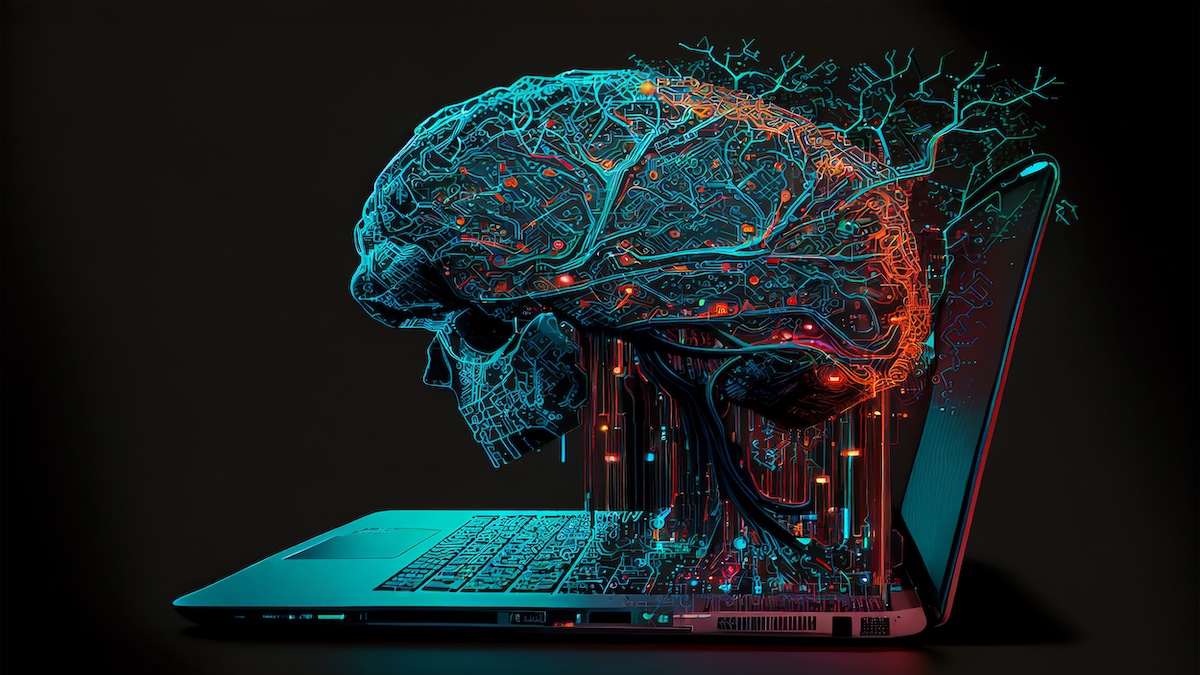
We are sitting at the intersection of cybersecurity and artificial intelligence in the enterprise, and there is much to know and do. Our goal is not just to keep you updated with the latest AI, cybersecurity, and other crucial tech trends and breakthroughs that may matter to you, but also to feed your curiosity.
Thanks for being part of our fantastic community!
In this edition:
Did You Know - AI-Powered Cyber Threats
Article - Weaponizing AI: Five Unique and Emerging Threats Every CIO & CISO Must Anticipate
Artificial Intelligence News & Bytes
Cybersecurity News & Bytes
AI Power Prompt
Social Media Image of the Week
Did You Know - AI-Powered Cyber Threats
Did you know deepfake content is projected to rise from 500,000 in 2023 to 8 million by 2025, enabling corporate impersonation for fraud, blackmail, or espionage? Source: TechRadar and Cisco Newsroom
Did you know cybercriminal groups use AI to build phishing websites and craft malicious code, significantly increasing the volume of infostealer-laden phishing, up 84% year over year? Source: IBM X‑Force Threat Intelligence Index
Did you know identity-based attacks, often fueled by AI-generated phishing make up 30% of all intrusions, leveraging valid accounts post-AI phishing? Source: IBM X‑Force
Did you know AI-powered phishing emails can now achieve click rates over 54%, matching human-crafted spear phishing? Source: arXiv
Did you know fully AI-automated spear phishing is 350% more effective than baseline attacks, and AI profiling accuracy sits at 88%? Source: arXiv and SecurityWeek
Did you know AI-powered spear phishing now outperforms humans by 24% effectiveness, up from being 31% less effective in 2023? Source: SecurityWeek and KnowBe4
Did you know agentic AI improved spear phishing effectiveness by 55% since 2023? Source: SecurityWeek
Did you know AI‑powered multi‑channel phishing campaigns have a 42% higher success rate compared to email-only scams? Source: TechMagic
Did you know of 386,000 malicious phishing emails, 0.7%–4.7% were crafted by AI, but increasing volumes amplify impact? Source: SecurityWeek
Did you know 30% of organizations were hit by AI‑enhanced voice (“vishing”) scams in 2024? Source: DMARC Report

Weaponizing AI: Five Unique and Emerging Threats Every CIO & CISO Must Anticipate
Rapid advances in generative AI are enabling threats like deepfake scams and adaptive malware, forcing security leaders to urgently rethink their defense strategies.
Everywhere you turn, artificial intelligence is revolutionizing industries, optimizing operations, and driving productivity to dizzying new heights. But amid the excitement, a shadow is growing, AI isn’t just transforming business for the better. It’s also being weaponized by threat actors in ways that are creative, deeply unsettling, and in many cases, still flying under the radar.
Here are five emerging AI-powered cyber threats that every CIO and CISO needs on their radar, especially because these aren’t just variations of “deepfake scams” or the usual adaptive malware stories. These are subtle, often overlooked, but rapidly evolving dangers that demand urgent attention.
1. Synthetic Insider Threats
Imagine an AI system that can observe employee behaviors, mimic their communication style, and convincingly impersonate them right down to their Slack quirks and email cadence. Cybercriminals are now leveraging generative AI to craft “synthetic insiders.” These bots infiltrate collaboration platforms, gain trust, and gradually gather sensitive information or even manipulate workflows, all while looking and sounding like your most reliable team member.
2. Automated Disinformation-for-Hire
Disinformation isn’t just a geopolitical problem anymore. AI-generated campaigns are targeting enterprises, planting fake reviews, social media rumors, or fabricated documents designed to erode trust in a brand or tank its stock price. This threat goes far beyond mere reputation damage; it can trigger real-world business crises before you even realize what’s happening.
3. AI-Driven Supply Chain Subversion
Supply chains have always been vulnerable, but now, AI-powered attackers can map supplier relationships, identify weak links, and launch precisely timed attacks. These go well beyond ransomware. We are talking about malicious code injected into firmware updates or “ghost” suppliers that exist only long enough to trick procurement systems. AI’s speed and scale mean a single vulnerability can ripple through your entire ecosystem in hours.
4. Machine Learning Poisoning Attacks
Most security teams are racing to implement AI-driven defenses, from anomaly detection to predictive threat models. But these same systems are now targets. Adversaries are using AI to subtly “poison” the training data or feedback loops of enterprise machine learning models, causing them to misclassify threats or ignore certain types of malicious activity. The scariest part? These attacks are almost impossible to spot until it’s too late.
5. Hyper-Personalized Social Engineering
Phishing emails are old news, but hyper-personalized AI-generated scams are another beast entirely. These aren’t just emails with your name and title, they’re tailored to your interests, writing style, and even current emotional state, inferred from your digital footprint. Deep learning models can predict what you’ll click on, who you’ll trust, and what makes you act in a rush. It’s no longer about broad nets, it’s about laser-focused manipulation.
Summing It Up
Weaponized AI is evolving at breakneck speed, often far ahead of traditional defense strategies. The most dangerous threats aren’t always the loudest or most headline-grabbing, they’re the quiet, insidious ones already weaving into your daily operations.
For CIOs and CISOs, anticipating these emerging threats isn’t just smart; it’s survival. The time to rethink, retool, and proactively defend against AI-powered adversaries is now.
Cybersecurity is no longer just about prevention—it’s about rapid recovery and resilience!
Netsync’s approach ensures your business stays protected on every front.
We help you take control of identity and access, fortify every device and network, and build recovery systems that support the business by minimizing downtime and data loss. With our layered strategy, you’re not just securing against attacks—you’re ensuring business continuity with confidence.
Learn more about Netsync at www.netsync.com
Artificial Intelligence News & Bytes 🧠
Cybersecurity News & Bytes 🛡️
Modernize your marketing with AdQuick
AdQuick unlocks the benefits of Out Of Home (OOH) advertising in a way no one else has. Approaching the problem with eyes to performance, created for marketers with the engineering excellence you’ve come to expect for the internet.
Marketers agree OOH is one of the best ways for building brand awareness, reaching new customers, and reinforcing your brand message. It’s just been difficult to scale. But with AdQuick, you can easily plan, deploy and measure campaigns just as easily as digital ads, making them a no-brainer to add to your team’s toolbox.
AI Power Prompt
This prompt will assist leaders at an organization better understand how bad actors are weaponizing AI and the impact it could have on their organization.
#CONTEXT:
Adopt the role of an expert cybersecurity strategist and AI ethics advisor. You will create a comprehensive internal education framework to help organizational leaders understand how malicious actors are weaponizing AI technologies and the potential impacts on their business operations, brand reputation, data security, and regulatory exposure. The material should not only raise awareness but equip leaders with critical thinking tools and decision frameworks for identifying risks and implementing protective measures.
#GOAL:
You will educate and empower leaders to recognize AI-driven threats—such as deepfakes, synthetic identity fraud, data poisoning, algorithmic manipulation, automated social engineering, and AI-powered malware—and understand their potential operational, financial, and reputational implications. The ultimate goal is to foster a proactive, informed leadership stance on AI threats that can shape policy, investment, and response strategies.
#RESPONSE GUIDELINES:
Follow this structured approach to generate an effective educational experience:
Start by clearly defining what it means to "weaponize AI" in today's threat landscape. Include real-world examples of malicious use cases and technologies.
Identify the categories of AI-based threats most relevant to organizational leaders, such as:
Deepfake impersonation targeting executives or brand reputation
AI-enhanced phishing and social engineering
AI-driven cyberattacks and automated exploit discovery
Data poisoning or model inversion against proprietary ML systems
Fake reviews, sentiment manipulation, and disinformation campaigns
Map each threat category to potential business impacts:
Brand and reputational damage
Financial loss or fraud
Data breaches or IP theft
Regulatory investigations and non-compliance
Employee and customer trust erosion
Offer a strategic decision framework:
Risk exposure assessment: Identify what data, systems, or people are vulnerable
Threat modeling: Evaluate likelihood, sophistication, and potential entry points
Business continuity and incident response: Build AI-specific response plans
Regulatory readiness: Align with emerging laws (e.g. AI Act, GDPR, FTC)
Provide leadership-level risk mitigation strategies:
Executive training on AI threat literacy
Third-party risk audits for AI tools and vendors
Investing in AI threat detection and anomaly monitoring
Cross-functional task force for AI ethics, compliance, and resilience
Close with a high-impact call-to-action to operationalize awareness into strategic planning, with a checklist or policy starter pack for boards and C-suites.
Optional: Include data visualization ideas for slide decks and briefing formats.
#INFORMATION ABOUT ME:
My organization: [DESCRIBE YOUR ORGANIZATION]
My role or leadership team: [ROLE OR LEADERSHIP TYPE]
Our current exposure to AI: [LEVEL OF AI INTEGRATION]
Industry context: [INDUSTRY]
#OUTPUT:
Your final output should be a high-level executive briefing format—suitable for slides, reports, or internal workshops—structured in plain English, free of technical jargon. It must include:
A short summary of each threat vector
Tangible real-world examples
Leadership-specific impacts
A mitigation or action plan per threat
A one-page strategy summary or checklist
Separate sections clearly and keep the tone urgent but constructive.
Questions, Suggestions & Sponsorships? Please email: [email protected]
Also, you can follow me on X (Formerly Twitter) @mclynd for more cybersecurity and AI.
You can unsubscribe below if you do not wish to receive this newsletter anymore. Sorry to see you go, we will miss you!











Social Media Image of the Week